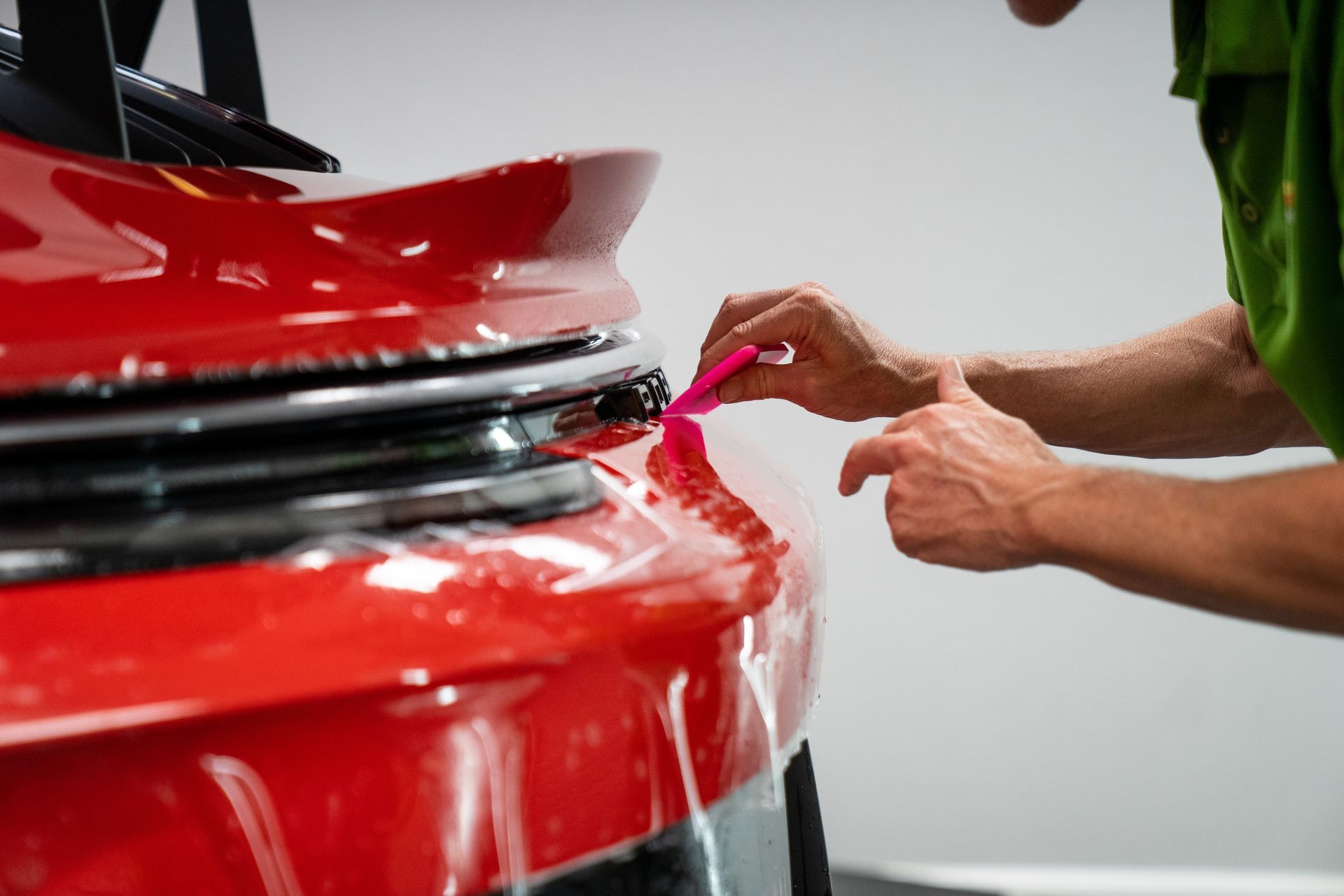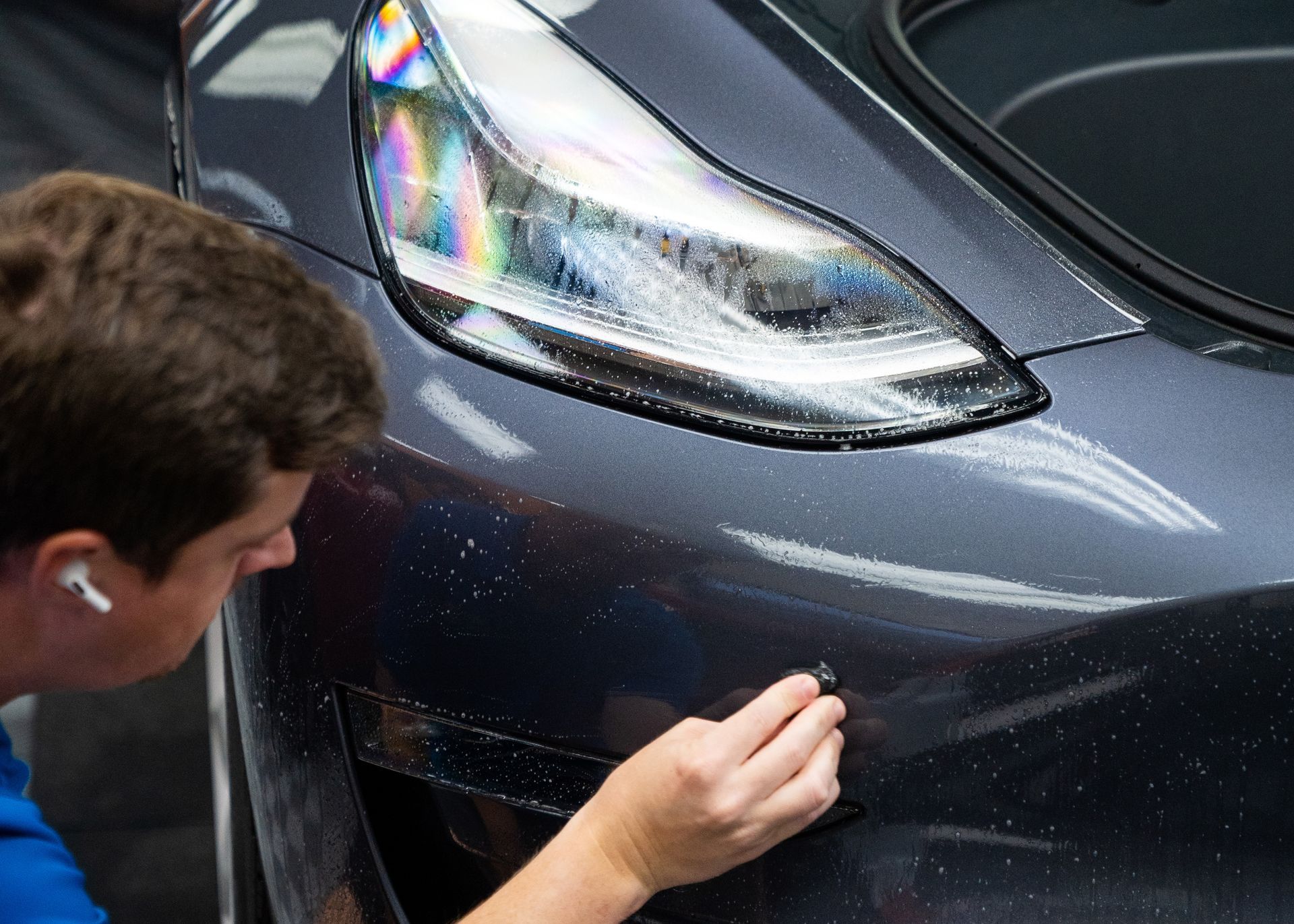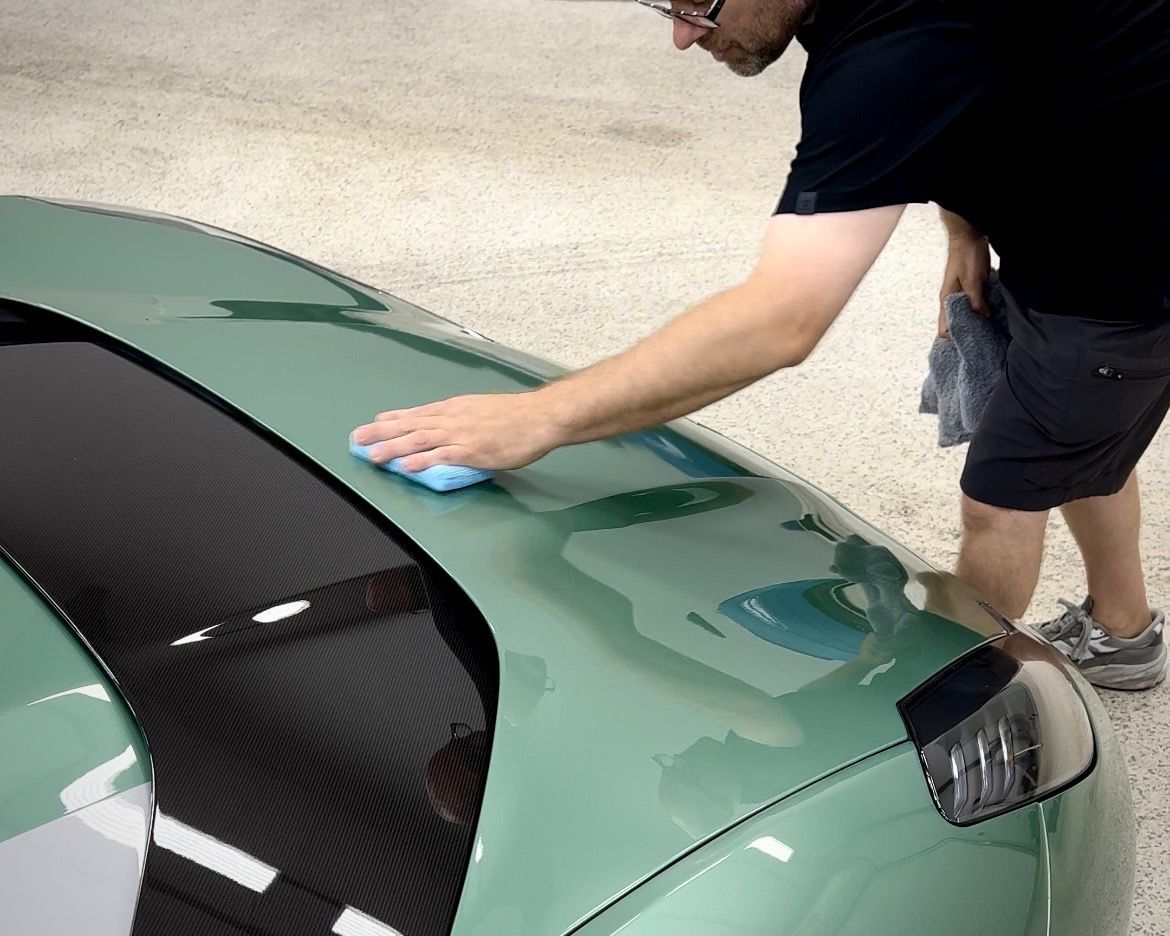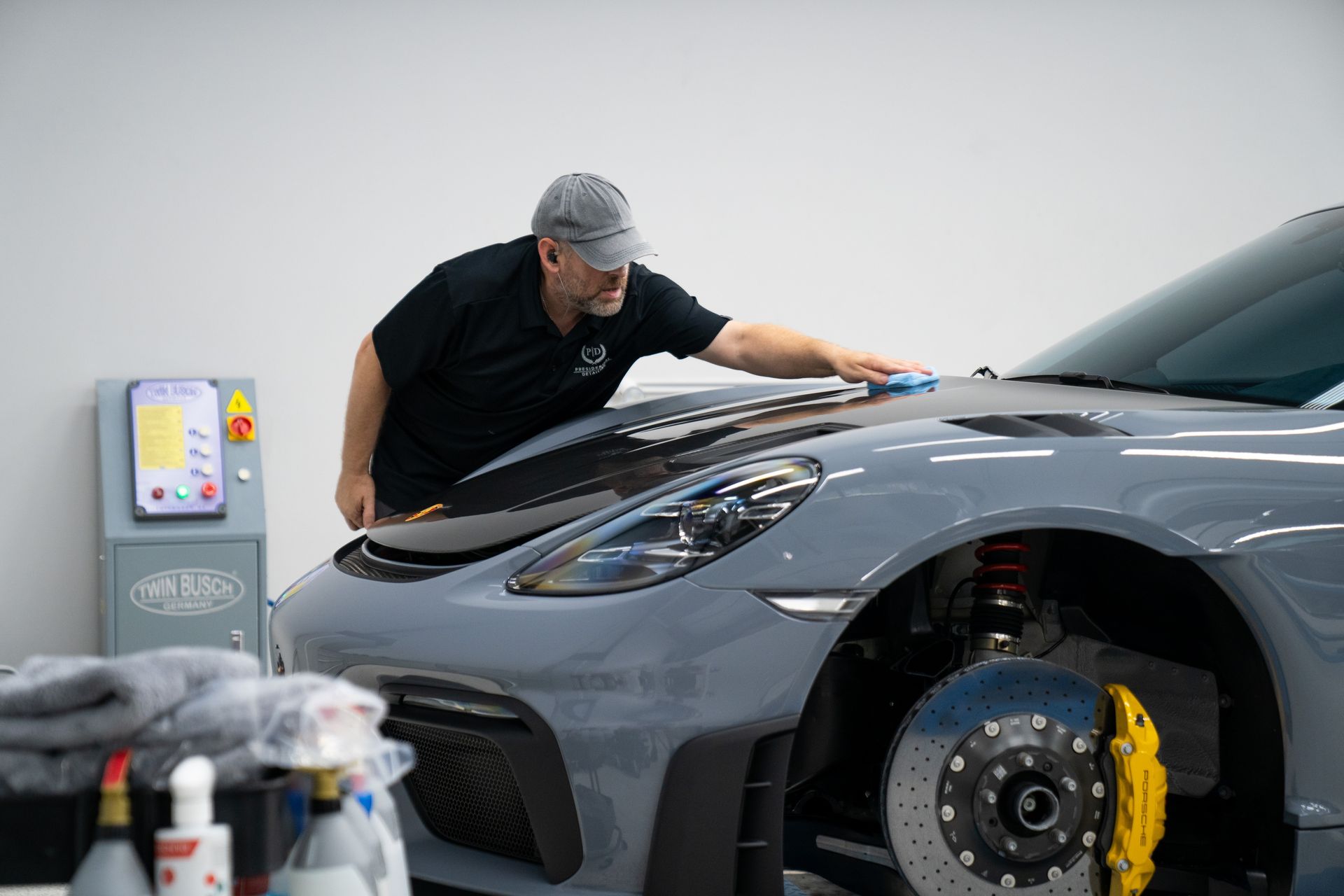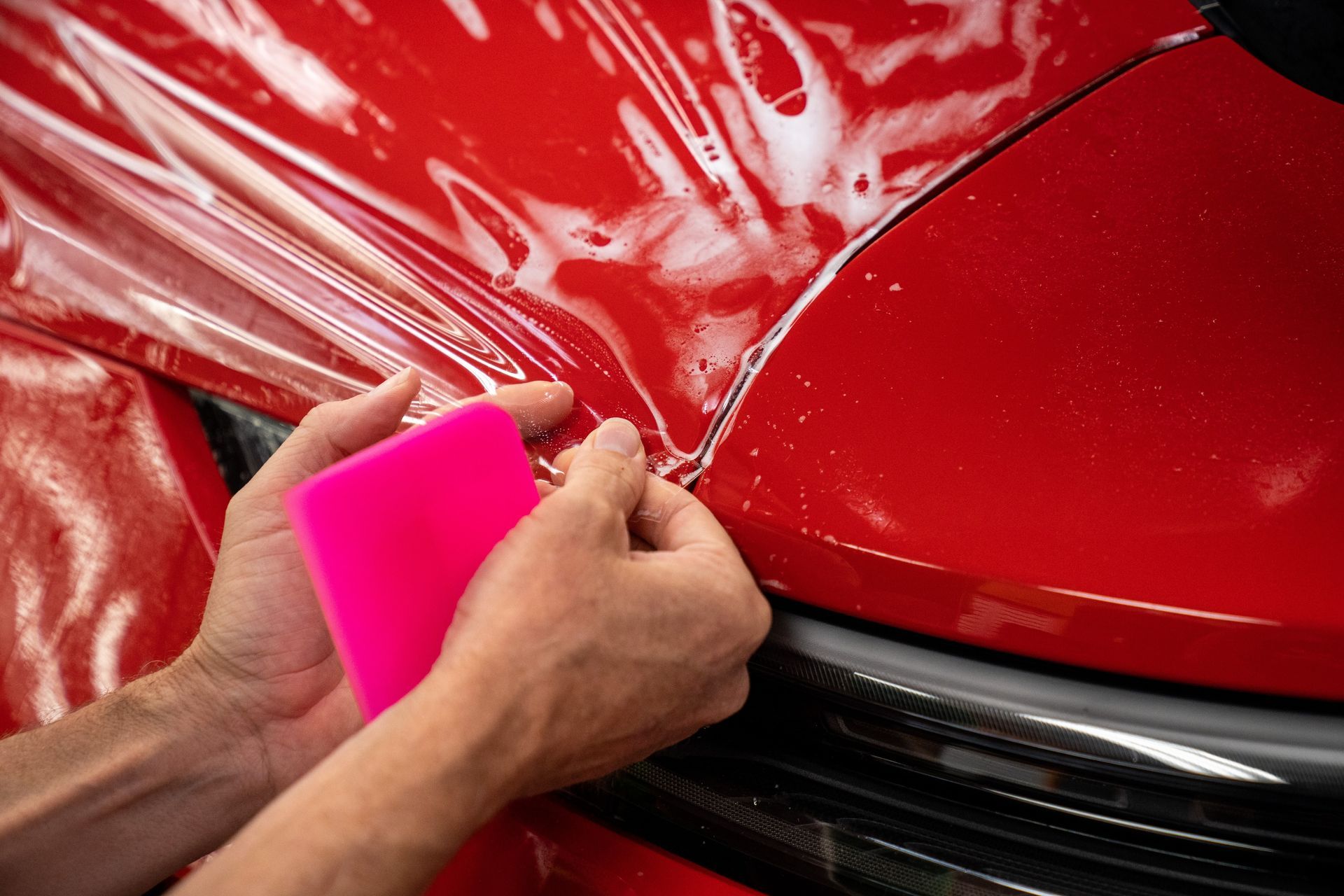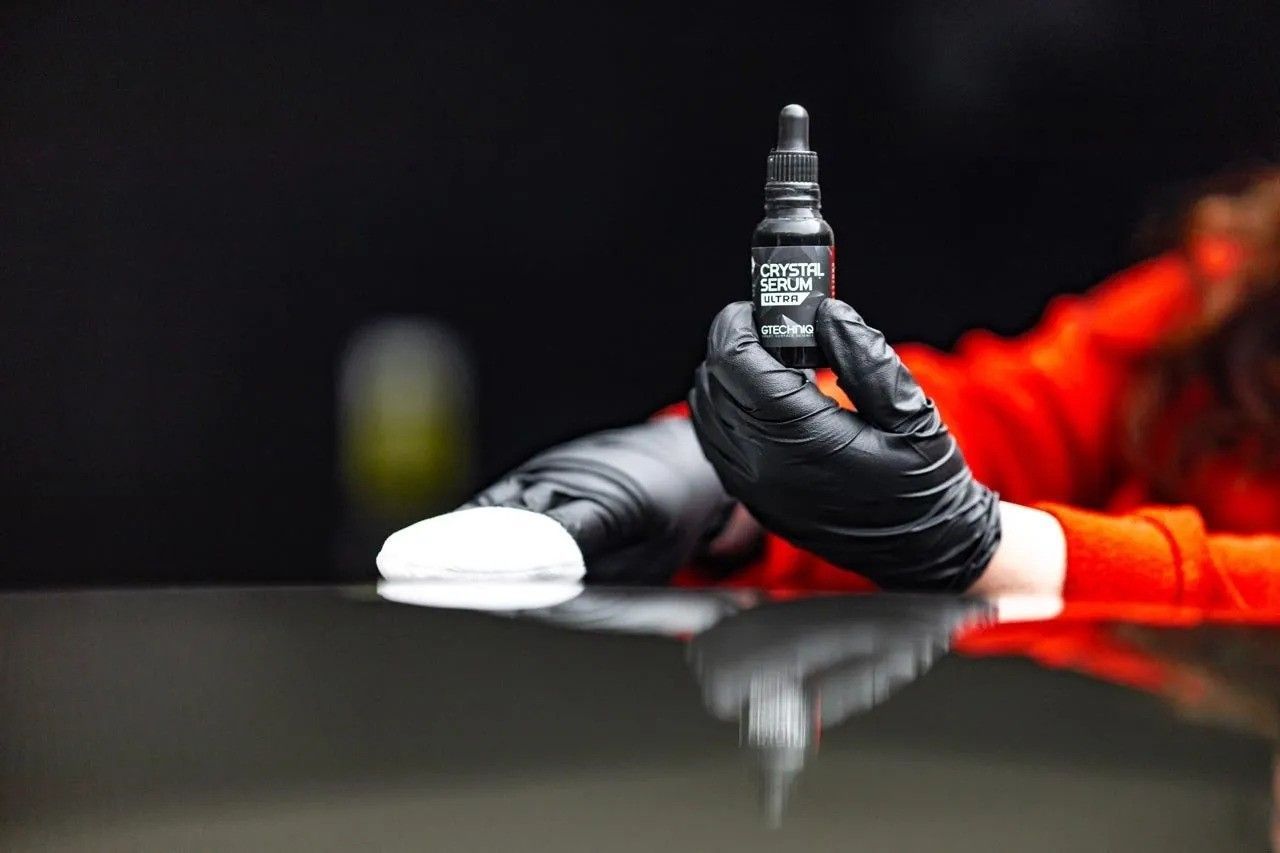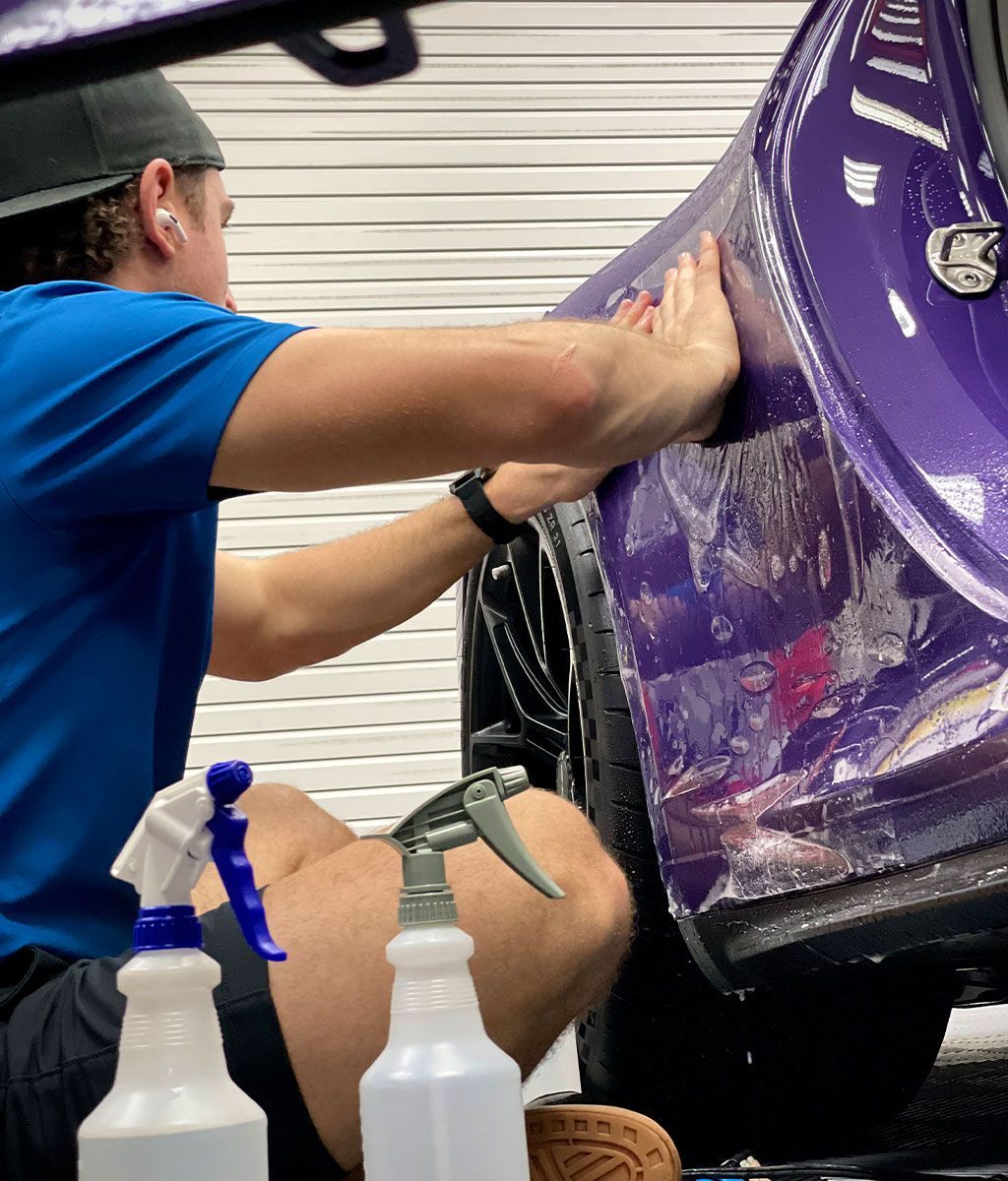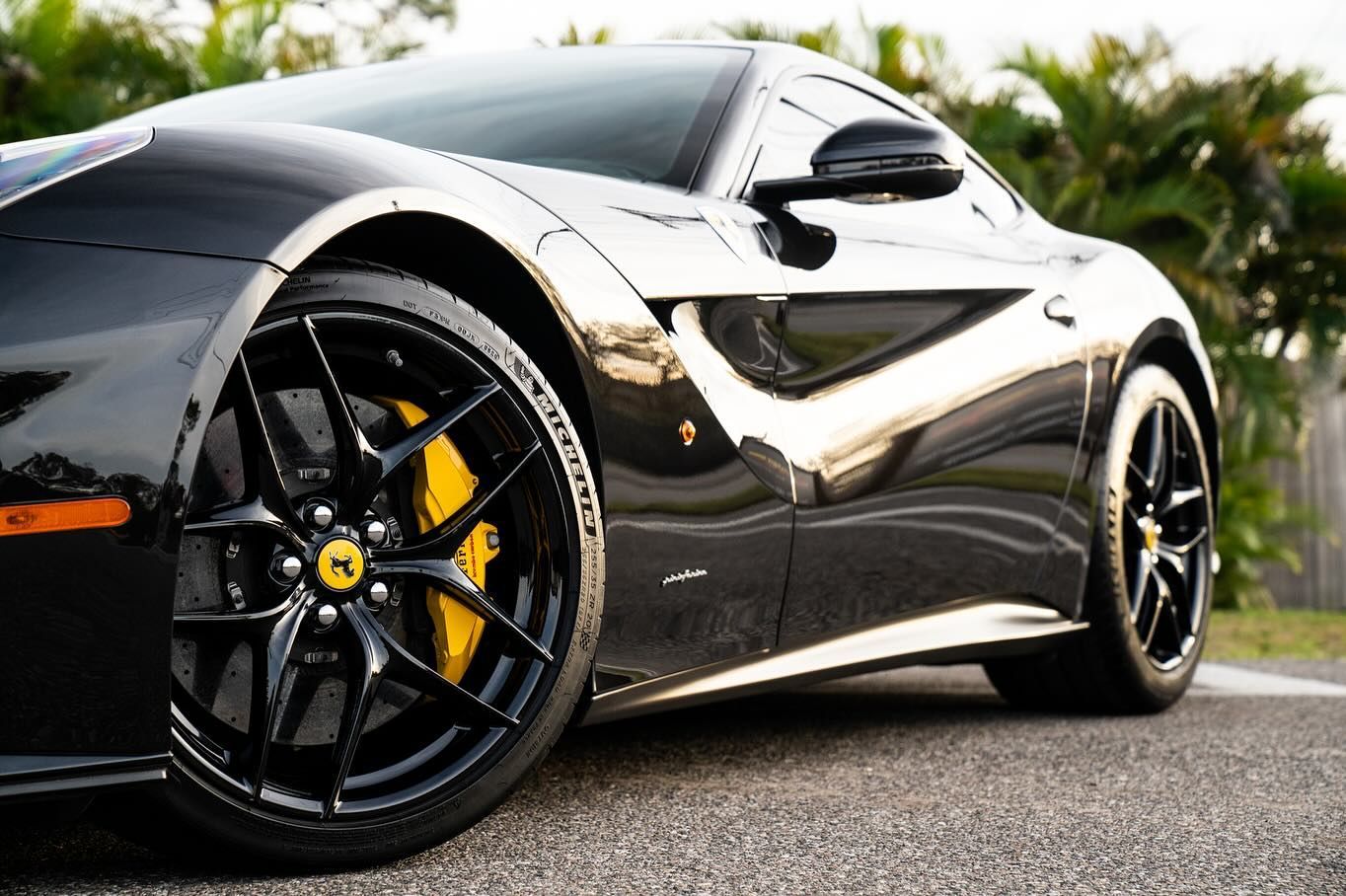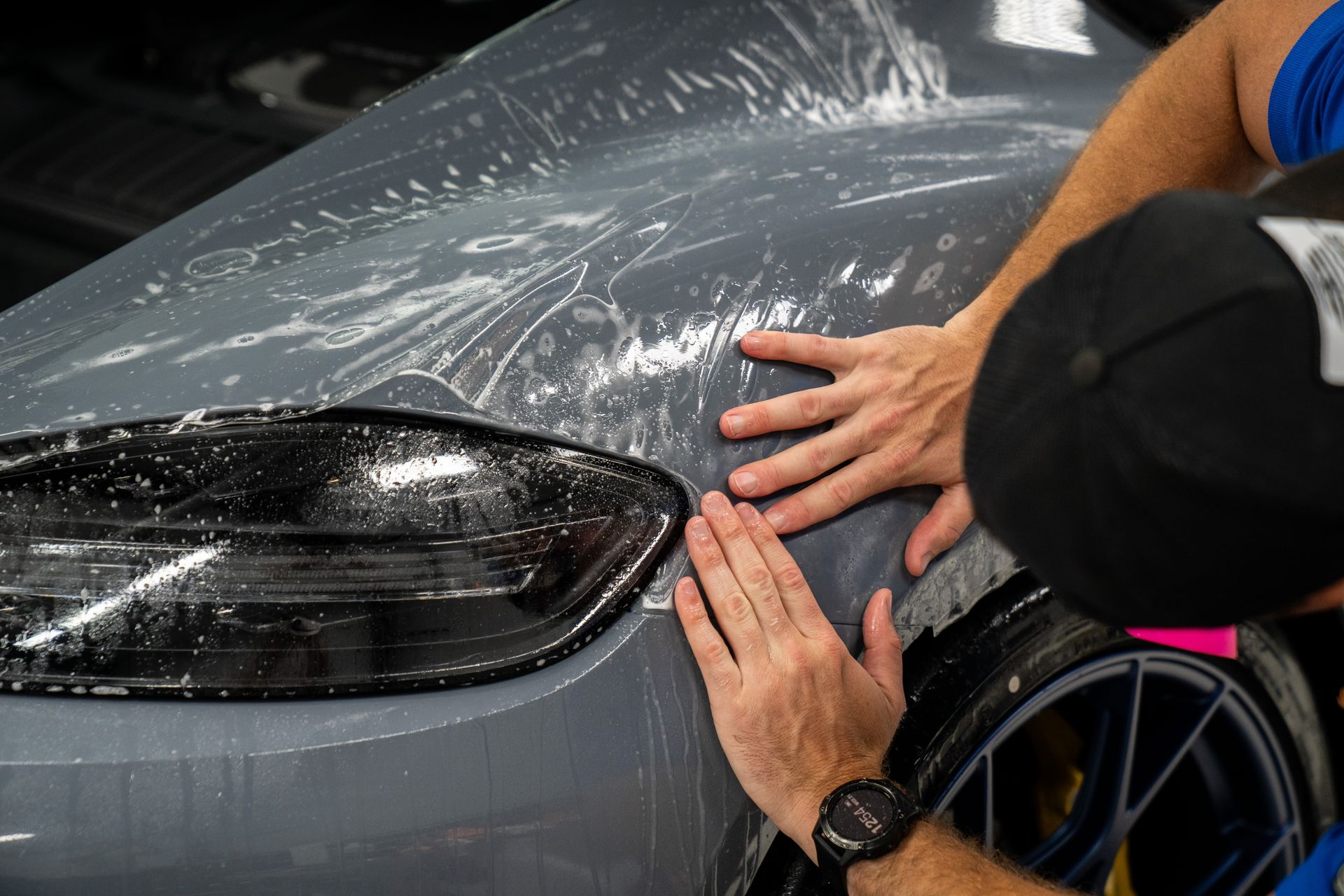The Ultimate Guide to Choosing PPF Thickness for Maximum Protection
CALL (813) 723-9679
GET A FREE ESTIMATEChoosing the right thickness of Paint Protection Film (PPF) might seem like a small detail, but it can have a huge impact on how your vehicle stands up against scratches and dents. If you've ever found yourself worrying about that tiny dent or scratch from a pesky rock or an errant shopping cart, you're not alone. This is exactly why understanding PPF thickness is so important. It's not just about aesthetics; it's about preserving your investment for years to come. In this guide, we’ll break down everything you need to know about picking the perfect PPF thickness that fits your lifestyle, ensuring that your ride remains as flawless as the day you drove it off the lot. So, let's dive into the world of PPF and discover what works best for you!
When choosing the right PPF thickness for maximum protection, consider factors such as the level of environmental exposure your vehicle faces, desired durability against abrasions and impacts, and your budget. Generally, a thickness of 8 mils is recommended for standard protection, while thicker films up to 12 mils offer enhanced resistance for high-risk environments.
Exploring Paint Protection Films (PPF)
Paint Protection Films, universally known as PPF, act like a suit of armor for your vehicle's exterior. Understanding their construction can influence your purchasing decision. The films are primarily made from thermoplastic urethane, which is both flexible and durable. This unique composition is crafted to withstand not only impacts but also environmental elements like UV rays and road grime. It's fascinating how something so thin—often just a few mils thick—can serve such an essential purpose, absorbing shocks while maintaining your car’s glossy appearance.
Different Thickness Options
One of the most vital factors to consider when choosing PPF is its thickness. Common thicknesses vary widely, typically ranging from 4 mils (0.004 inches) to as much as 12 mils (0.012 inches). Each thickness offers unique advantages. For instance, a 6 mil PPF can withstand impacts from small stones hitting at speeds up to 60 mph, while a more robust 10 mil PPF can handle impacts at even faster speeds, up to 80 mph. It’s this kind of durability that can make or break the effectiveness of the film.
When considering protection level vs. cost, thicker films generally provide better defense against harsh conditions, but they also come with a higher price tag. Besides impact resistance, you should also consider scratch resistance. An 8-mil PPF offers a scratch resistance rating of 3H on the pencil hardness scale, whereas the thicker 12-mil PPF climbs to an impressive rating of 4H. This difference may seem subtle, but in practical terms, it means your vehicle could remain well-protected against minor abrasions, whether from swaying branches or errant shopping carts.
Furthermore, beyond just impact and scratch resistance, there are other critical factors you shouldn’t overlook; namely, UV protection and long-term durability play significant roles in sustaining your vehicle's exterior over time. A 5 mil PPF effectively blocks around 99% of harmful UV rays, while a 10 mil film goes further with enhanced UV block and additional coatings for optimal performance against fading paint. Most importantly, understand that while thinner films might be easier on the wallet—coming in at about $8 per square foot—they often compromise on longevity, lasting approximately 3-5 years under normal conditions. In contrast, investing in materials like 12 mil PPF, priced upwards of $15 per square foot but capable of lasting nearly a decade with proper maintenance, could save you money down the line by avoiding early replacements.
Selecting the right PPF thickness requires balancing your budget with the level of protection you desire. As you consider these various aspects, it's essential to ask yourself what best suits your individual needs for long-term vehicle care. As we explore more specific options tailored to your requirements, understanding how these factors influence your choice will empower you to make a better-informed decision.
Selecting the Right Thickness for Your Needs
When it comes to Paint Protection Film (PPF), thickness plays a pivotal role in determining the level of protection you receive. Films typically range in thickness from 4 to 10 mil, each designed for specific use cases. Selecting the appropriate thickness isn't merely about picking the heaviest option; it's about matching the film's characteristics with your driving habits and environmental conditions.
Understanding Thickness Levels
For instance, a 4 mil film acts as a safeguard against minor scratches and light debris, making it suitable for those who drive primarily in urban settings, where road exposure is low. This film can handle day-to-day wear but isn’t equipped to fend off significant impacts or heavy-duty use. You might find this film appealing if you're shuttling around town or parking in well-maintained lots.
As you ascend the thickness scale, such as moving to a 6 mil film, you gain moderate protection against small rocks and typical road debris. This increased strength proves beneficial for suburban driving, where encounters with gravel, road imperfections, and everyday scrapes are more common. You may also appreciate its slightly enhanced durability—an average lifespan of 5 to 7 years means fewer frequent replacements, letting you enjoy peace of mind while out on the road.
Now consider transitioning to an 8 mil film for everyday driving, which strikes a perfect balance between protection and flexibility. With resistance to more substantial impacts and abrasions, this thickness is favored by many drivers who frequently venture onto highways or face adverse weather conditions. It’s here that you'll experience good durability alongside superior protective qualities.
Finally, a 10 mil film is geared towards those who crave maximum protection against severe impacts and exposure to environmental hazards. Ideal for off-road adventures or individuals working in rugged settings, this thickness offers exceptional resilience while still providing a smooth finish on your vehicle. While it does come with a higher initial cost and may demand extra care during installation due to its rigidity, the level of security it provides can be invaluable.
Once you've identified your ideal thickness based on your needs and usage patterns, consider how layering films might enhance your protection levels without sacrificing appearance or performance.
Benefits of Additional Layers
By layering up, you're stacking the odds in your favor against potential damage. Enhanced durability is a key benefit here. When multiple layers of PPF are applied, they work together to distribute impact forces across a larger surface area. This means that if a small rock or another debris hits your car, rather than concentrating all that energy on a single layer, it spreads out. Imagine a team of players working together in a game; when they support one another, they’re less likely to falter.
Furthermore, the self-healing properties found in higher-end PPFs mean that minor scratches can literally disappear with just some heat exposure. Think about it: sitting under the warm sun or touching it lightly with your hand can restore a flawless finish—it's almost like magic! This capability significantly reduces maintenance efforts and keeps your vehicle looking pristine without the need for frequent touch-ups. The added UV protection is another standout feature of additional layers. Consistent exposure to ultraviolet rays can lead to paint fading and oxidation over time. However, thicker PPFs can block up to 99% of these harmful rays, ensuring that your car's vibrant paint stays strikingly radiant for years to come.
According to various car enthusiast forums and experiences shared by many, vehicles that have opted for multi-layer PPF installations tend to see a significant return on investment when it comes to resale value. It’s an investment in protection but also an enhancement of aesthetic value that can pay off down the road. While these benefits certainly make a strong case for additional layers, it's important to explore how different elements can affect the performance and lifespan of PPF applications.
Factors Influencing Durability
The durability of Paint Protection Film (PPF) is influenced by various elements beyond just its thickness. One significant aspect is the environment in which your vehicle operates. For example, vehicles that spend much time under direct sunlight require a film that offers exceptional UV protection to prevent fading and discoloration over time. In areas where scorching sun rays bear down relentlessly, choosing a PPF with high resistance against ultraviolet damage can help maintain both the color and integrity of your car's paint.
On the contrary, if you’re navigating through snowy terrain or gravel roads, you need to prioritize films that can withstand road salt, debris, and harsh weather conditions. These films are designed with enhanced toughness to resist chips and scratches that might otherwise compromise your car’s surface. Another factor to consider is the application process itself. Quality installation can significantly enhance the film's lifespan. It’s advisable to have a professional handle the installation because even a small air bubble trapped underneath can lead to premature wear or peeling. Proper application ensures complete adhesion to the vehicle surface, allowing for better protection against external threats.
The film's composition also plays a vital role in how well it holds up against various rigors. Many manufacturers now incorporate advanced self-healing properties in their PPFs, allowing minor scratches and swirl marks to disappear when exposed to heat or sunlight. This technology means that everyday wear and tear can be mitigated passively, extending the visual appeal of your vehicle without much effort on your part.
Thus, when selecting PPF for your vehicle, keep an eye out for films equipped with these modern technologies as they form part of an ongoing maintenance strategy. With environmental and technological considerations in mind, we now shift focus to key techniques and methods for applying this protective film effectively to enhance its longevity.
PPF Application and Installation
Proper installation is crucial because even the highest-quality paint protection film (PPF) can't perform well if it’s poorly applied. This is where the diverging paths of professional installation and DIY kits come into play. A significant factor to consider is that professional installations typically ensure precision that DIY efforts may compromise.
Professional Installation vs. DIY Kits
While DIY kits present a tempting cost-effective option, they are often no match for the expert touch offered by professionals. An improperly installed film might bubble, peel, or attract dirt, leading to a compromised protective capability. In contrast, professionals have the experience to prepare vehicle surfaces meticulously, ensuring that the adhesion of the film is maximized. This expertise translates not only to aesthetics but also durability; after all, who wants to invest in a product only to see its effects diminished due to a flawed installation?
For those considering a DIY approach, there are numerous factors to keep in mind to increase your chances of success. A clean, dust-free workspace is imperative; any speck of dirt between your car's surface and the film can create imperfections that are difficult—or impossible—to fix after application. Additionally, having the right tools on hand is essential. You'll want to equip yourself with a quality squeegee for smoothing out bubbles as you apply the film, an application gel that provides slip while positioning the film, and a heat gun that aids in adjusting the film’s shape around curves and contours.
The application itself involves several steps that must be executed with care. Begin with meticulous surface preparation using pH-neutral soap and suitable decontamination products to strip away any dirt or grease that could prevent proper bonding. After cleaning comes proper alignment and positioning of your PPF—taking your time here will help you avoid future headaches.
Remember, patience is key! If you rush through this step, you'll likely end up needing to redo sections of your work. Once applied, it's important not just to admire your handiwork but also to ensure you're following up with appropriate care characteristics outlined by the manufacturer. Most importantly, allowing the film sufficient time to bond under controlled conditions really enhances longevity.
Following these installation tips isn’t merely about achieving a good appearance; it’s an investment in your vehicle's protection. Now, let's explore techniques for ensuring that stunning finish you desire on your newly protected surfaces.
Achieving the Desired Finish
When it comes to selecting the perfect PPF for your vehicle, achieving your desired finish is essential. This not only ensures protection but also expresses your personal style. The finish of your PPF plays a substantial role in how your car looks day to day. By understanding the differences between glossy and matte finishes, you can make an informed choice that complements your vehicle's personality.
Glossy vs. Matte Finishes
A glossy finish is often favored because it showcases a vibrant, shiny appearance that enhances the original color of your car. Think of it as the exclamation point that elevates your vehicle's aesthetics—many car owners find themselves enamored with that mirror-like glow as it reflects sunlight on a summer’s day. It’s no surprise glossy finishes have become a staple among avid car enthusiasts who crave striking visual impact.
On the flip side, some drivers are drawn to matte finishes, which present a unique, understated charm. This option caters to those looking to make a statement where subtlety reigns. Instead of shouting from the rooftops with shine, a matte finish whispers sophistication and distinction. Each type of finish has its own dedicated following.
Whichever finish you select, consider PPF products that include hydrophobic properties. These features enable water to bead off surfaces rather than cling to them, significantly reducing dirt buildup and other contaminants on your car's exterior. Imagine washing your car less frequently while still maintaining that desirable shine; this approach not only saves time but also keeps your investment looking fresh longer.
As you venture into choosing PPF thickness and material, remember that both aesthetics and protection go hand-in-hand. Having clarity on these aspects can guide you in making a decision that transforms not just how your vehicle looks but also how well it withstands everyday wear and tear. In summary, understanding the nuances of PPF finishes allows you to enhance both the appearance and durability of your vehicle while aligning with your personal style preferences.
Shield Your Car with Premium PPF in Tampa, FL
Presidential Automotive Detailing offers expert paint protection film (PPF) services in Tampa, FL, designed to safeguard your vehicle from the wear and tear of everyday driving. Our high-quality PPF acts as a protective shield against rock chips, scratches, and other environmental hazards, preserving your car’s paint for years to come. Trust our experienced team to install this clear, durable layer that keeps your car looking flawless while reducing the need for constant touch-ups. Contact us today to protect your investment and enjoy a flawless finish!
